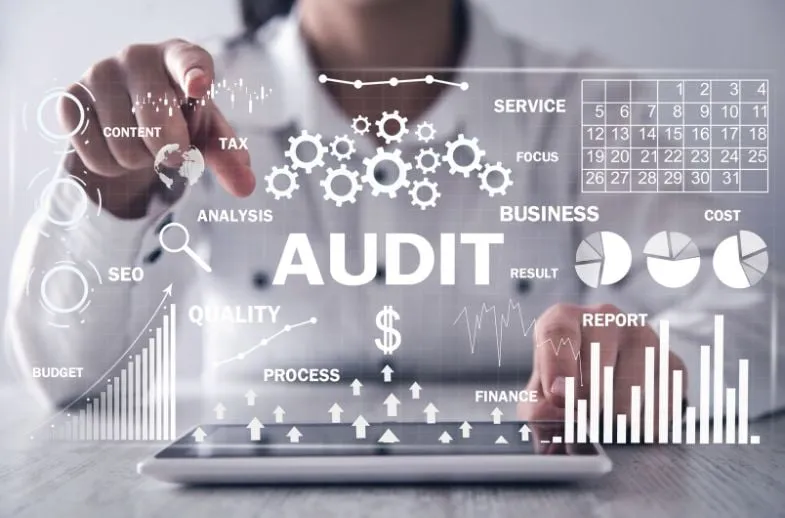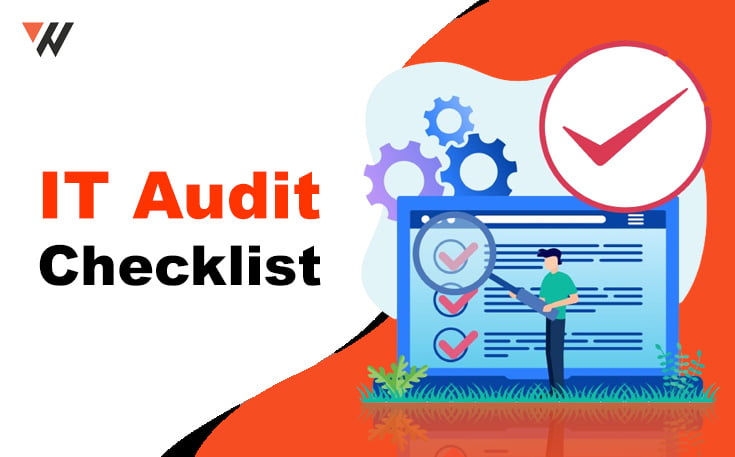Small businesses usually depend on technology to improve customer service and operational efficiency. Technology has many advantages but also carries some risks, particularly regarding data security and regulatory compliance.
Regular IT audits are essential for small businesses to reduce these risks.
This blog post contains the best IT audit checklist for small businesses.
What is an IT Audit?
IT audits evaluate the effectiveness of a small business’s IT environment while searching for security weaknesses and deploying any necessary security measures. This way, small businesses can effectively avoid prospective security flaws and compliance issues before they become so big that they have to seek the help of a professional.
IT audit serves as a proactive approach typically conducted by managed IT service providers to outline issues with small firms and can help the firm channel the scarce resources it has to enhance the general cybersecurity situation within the facility.

The Importance of IT Audit
In general, an IT audit is a comprehensive assessment of an organization’s IT structure, guidelines, and procedures. I will explicate below how they are relevant in so many ways.
1. Security
Small businesses are considered easy targets for hackers. An IT audit helps identify system vulnerabilities, which in turn helps repair them before they are utilized against you. In most cases, small businesses are considered vulnerable since they may not afford or lack the capacity to offer robust security solutions.
IT audit serves as a proactive approach to outline issues with small firms and can help the firm channel the scarce resources it has to enhance on the general cybersecurity situation within the facility.
2. Compliance
A set of rules considers to be binding concerning the penetration of cybersecurity and data protection across several industries. Large penalties can be imposed in case the company fails to adhere to the laws of the country.
IT audits of your company establish whether or not your company adheres to these laws. IT audits involve thorough assessments of your business’s internal IT systems, networks, and processes in a bid to uncover vulnerabilities or issues concerning compliance.
Thus, companies can guard against future risks and have the required protection measures in place to protect valuable information and avoid hefty losses by conducting IT audits regularly.
3. Effectiveness
The evaluation process for IT systems helps businesses understand the possibilities of identifying areas that may be expensive and finding ways to reduce the cost of technology.
When you conduct a study of processes in your IT systems, you learn unique operations that would slow or halt other processes in a chain of activities. This evaluation might also help reveal where operations and resource management could be improved.
4. Risk Management
You can create plans to reduce the effects of disasters related to IT by identifying possible risks and vulnerabilities. These strategies include strong security measures, regular data backups, and developing backup plans for various circumstances. Regular risk assessments and familiarity with new threats can help prevent possible vulnerabilities and guarantee the resilience of IT systems.
The Best IT Audit Checklist for Small Businesses
Below is a basic IT audit checklist that every business can use to audit IT systems and other tech assets:
1. Define Audit Objectives
Understanding your objectives is essential to planning an effective audit. You can ensure the audit process is targeted towards particular areas of concern by clearly defining the audit’s goals and objectives.
You’ll be able to do this to evaluate the effectiveness of internal controls, identify any potential risks, and make suggestions for improvement to improve organizational performance in general. Determining the audit’s scope and resources will be easier with a better understanding of your objectives, ensuring it is carried out effectively and efficiently.
2. Inventory and Documentation
List all the hardware, software, and data assets, including network settings and architecture. Keep your inventory registration ongoing. Regularly update the inventory registration to ensure accurate and up-to-date information.
This will help identify any potential gaps or vulnerabilities in the system and allow for efficient management of the inventories. Consider implementing a robust tracking system that can provide real-time visibility into the location and status of each asset, facilitating better resource allocation and maintenance.
3. Data Backup and Recovery
Ensure regular automated backups of critical data. Test data restoration processes to confirm they work as expected. Establish a disaster recovery plan.
Regular automatic backups of important data are essential to ensure that the data can be easily restored during a disaster, such as a system failure or data breach. However, periodically testing the data restoration processes is equally important to ensure they function correctly and efficiently.
4. Security Assessment
Evaluate the strength of your passwords and ensure they are regularly updated. Implement two-factor authentication wherever possible. Review firewall configurations and access controls. Scan for vulnerabilities and perform regular penetration testing.
Make sure your antivirus and anti-malware programs are relevant. Regularly updating and evaluating the strength of passwords is extremely important to protect against unauthorized access.
Educating employees about the importance of strong passwords and providing training on creating and managing them can further enhance security measures.

5. Software Licensing and Updates
Verify that all software is properly licensed. Keep software and operating systems up-to-date with security patches. Regularly check for updates and install them immediately to ensure any vulnerabilities are addressed.
Consider implementing a robust software asset management system to effectively track and manage licenses, ensuring compliance with legal requirements.
6. User Access and Permissions
Review user access levels and permissions. Remove or adjust access for employees who no longer require it. This process ensures that only authorized individuals can access sensitive information and resources within the organization.
Reviewing user access levels and permissions helps maintain a secure environment by identifying and removing unnecessary access rights. It is important to periodically update access privileges based on changes in job roles or employee departures to minimize potential security risks.
7. Data Privacy and Compliance
Ensure compliance with applicable data protection laws (e.g., GDPR, HIPAA). Implement policies for data handling and storage. Inform staff members of the best practices for data protection.
Examine and evaluate the effectiveness of data protection procedures regularly to recognize any possible shortcomings or potential development opportunities. Establish a clear incident response plan to immediately address and mitigate any data breaches or security incidents that may occur.
Final Words
Protecting an organization’s digital assets and making sure it complies with laws and industry standards require a thorough IT audit.
IT auditors can evaluate system vulnerabilities, control effectiveness, and data integrity by carefully using this checklist. Keep in mind that this IT audit checklist is only a starting point and that exact audit requirements could change depending on organizational demands and laws that apply to your business.





